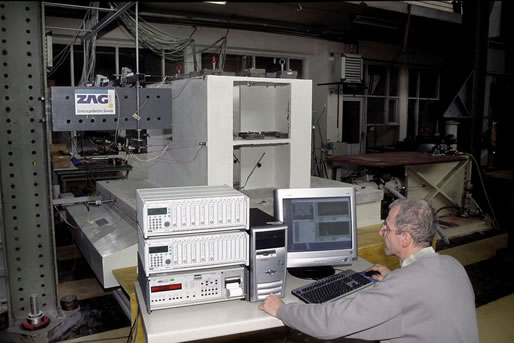HBM technology for more than 30 years
The construction laboratory includes a HBM KWS/6 T-5 amplifier and an MBS4 magnetic tape recorder that have been in use for more than 30 years. The development of the hydraulic control system was accompanied by computer-based data acquisition which meant that the number of measurement points could be increased. At a later date, more equipment was added, including amplifiers (KWS 6A-5, KWS 3073, KWS 3082A) and transducers (W 200, W100, W 50, W 20, B12/200, D 1).
